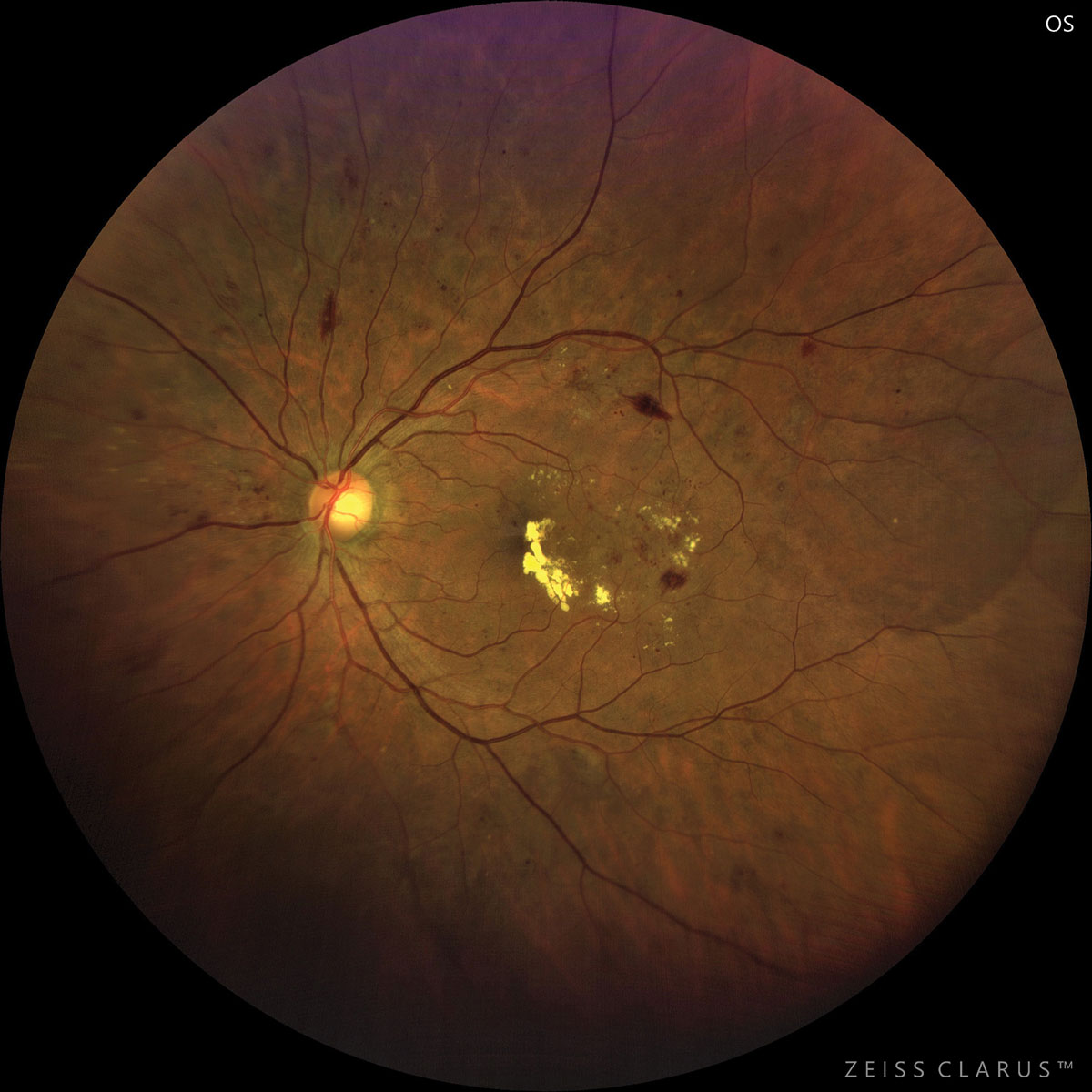 |
In proliferative disease, white blood cells can enter the retina when the blood-retinal barrier is compromised via neovascularization. This may lead to an increase in white blood cells entering the eye and a decrease in white blood cells in circulation. Photo: Jay Haynie, OD. Click image to enlarge. |
Diabetes and its complications are closely associated with chronic inflammation, and retinal inflammation is also thought to contribute to diabetic macular edema (DME). In a paper recently published in Frontiers in Endocrinology, researchers pointed out that complete blood count is “an affordable and readily available test” for assessing inflammation, since white blood cells (WBC) are considered inflammatory response biomarkers. They investigated the potential relationship between peripheral blood biomarkers and DME, and found that they may hold clues to disease pathogenesis. “Compelling evidence suggests that the elevated physiological WBC count is associated with the presence and severity of DR as well as DME,” the researchers noted in their paper.
The team’s cross-sectional, hospital-based study included the contralateral eyes of 239 inpatients (mean age 55) with type 2 diabetes who underwent vitrectomy for proliferative diabetic retinopathy. Patients’ average central macular thickness was 284.23µm. Models showed a significantly negative association between central macular thickness and both WBC and neutrophil count. For eyes with DME, there was an inverse association between DME and WBC, monocyte count and eosinophil count.
“This clinical study demonstrated that lower physiological WBC levels are associated with increased central macular thickness as well as the odds of DME in Chinese patients with proliferative diabetic retinopathy,” the researchers wrote. “Our results show that WBC and its subtypes in circulation may play an important role in the pathogenesis of DME in proliferative diabetic retinopathy patients.”
Lei C, Gu J, Liu L, et al. The correlation between peripheral complete blood count parameters and diabetic macular edema in proliferative diabetic retinopathy patients: a cross-sectional study. Front Endocrinol 2023;14:1190239. |

